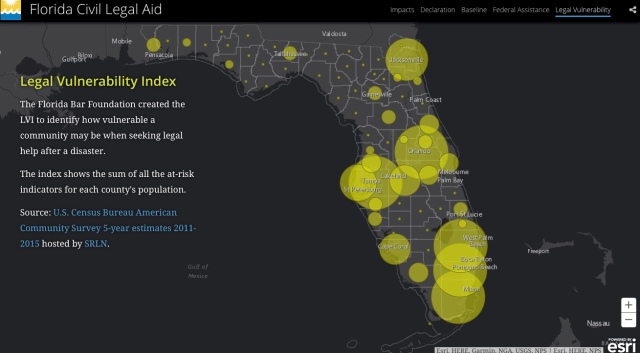I think it may be time to think our way through to a new and broader way we think and talk about our movement. These suggestions are based on assumptions that I list below, that are strongly supported by the latest communications research funded by the Public Welfare Foundation .
Public Support for Major Changes in the Civil Justice System. I believe that there is now broad public support for very significant changes in the civil justice system itself. I believe that one, but not the only, driver of this demand for change comes from issues of access and affordability, all the way up the income scale. (see page 23 of the research; “Half say it needs to be “completely rebuilt” or undergo “fundamental changes.””) This support is deeply linked to growing anti-corporate feelings, and to the sense that the system is rigged. See, e.g., strong support for “Our legal system allows the wealthy and powerful to mistreat ordinary Americans and avoid any accountability” at page 35 of research. Support for specific reforms is listed at page 41 and 42.
Fascinatingly, that support for change varies very little when the need for additional taxes is explicitly mentioned, see page 27.)
Deep Concern About Universality. I am certain that the public support depends on the sense that they too will get help when needed. That is why Medicaid is now a third rail instead of a natural target.
Positive Views of Judges, the Courts, Legal Aid and Pro Bono Lawyers. The public have strongly positive net views of all these stakeholders: Pro Bono Lawyers, net +30, Civil Justice System, net+28, Civil Legal Aid, Net +27, the Judicial Branch, net +30. See page 21 of research.)
Negative Views of the Legal Profession. This is in contrast, I also believe to net views of lawyers and the legal profession (Lawyers -5, Attorneys -1). See p 21 of research.)
If I am right about these assumptions, then the public’s critiques of the system as a while is that the problem comes from the fee-for-service bar, far more than on courts and other sectors. That leads to an additional important conclusion.
Messaging. I think we tend to use inadequate messaging techniques. We refuse to talk about our own critiques of the system, how it is “rigged” and our alliances are designed to change it. We do this not because of incompetence on our parts, but because we are a) fearful of alienating by seeming overcritical, or b) worried about keeping specific institutions such as courts or the bar happy. I think that if we faced up directly and honestly to those concern, we might find ways to transcend them.
If I am right about this, then we have far more freedom of maneuver than we realize in appealing together with the courts for support for the courts, and access to justice initiatives, in very close cooperation together at both the practical and messaging levels.
To be specific, the public wants the legal system to give people the help they need so that their rights are protected, they want the system reformed so that it can protect the rights of all, and they want someone (preferably everyone) to take a leadership role in ensuring that both those tasks are fulfilled.
So, again relying on the accuracy of these assumptions and conclusions, let me suggest the following messaging. (In this piece, following the research, I have used the words “legal aid” to mean the broad comprehensive multi institution movement that includes the access components of courts as well as traditional advocacy organizations. I continue to believe that this formulation raises problems that need to be addressed, but that is for another day.)
Legal aid is the spearhead for fundamental reform of the civil legal system. Our effectiveness comes from the fact that we are both Protectors and Pioneers for ordinary people — all of us. Every time a court-based self-help information program gives someone the information that person needs to present their case, we are learning how the services and process can be improved. Every time one of our non-lawyer navigators helps a person navigate their way through a barrier strewn procedural system and give that information to the judge, we are also getting information to present to managers about how the process can be simplified, and how judges can do a better job of asking questions. Every time a lawyer stands up in court, they learn more about the problems that led to court in the first place, and get ideas for changes and now to advocate for them. We protect ordinary folks, and we are the pioneers for the fundamental changes the system needs to fulfill the promise of laws and freedom.
Using the terms as in his para, the point is that we can not separate our protection work from our advocacy and leadership for change in the system. Now, the general public is, I think totally comfortable with this combined definition of legal aid. (note, some have suggested alternative terms for the two components, such as
Indeed, it would be fascinating to test a message that explicitly links the two ideas in this one message.





